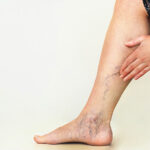Osteoporosis causes bones to become weak, making them more prone to fractures and breaks. This fragility makes them highly susceptible to fractures from even minor falls or simple actions, such as sneezing. While osteoporosis affects both men and women, it is particularly prevalent in women after menopause due to hormonal changes. Here is more information about the risk factors, symptoms, and treatment options for osteoporosis to help women manage their health:
Bone Loss
Women experience rapid bone loss in the years following menopause, which may increase their risk for osteoporosis. Estrogen levels can drop significantly during this time, and estrogen is a hormone that helps protect bone density. An X-ray scan measures bone mineral density to diagnose the condition.
Lifestyle choices also contribute to bone health. Factors such as diet and physical activity are beneficial, and they can significantly influence health. A daily intake of adequate calcium and vitamin D is used for postmenopausal women to support bone structure.
Weight-bearing exercises, such as walking or lifting weights, stimulate bone-forming cells. These activities aim to help strengthen bones over time. You may work with a healthcare provider to develop an appropriate exercise plan.
Back Pain
Chronic back pain may be a symptom of osteoporosis, so you might notice discomfort when vertebral fractures occur. These small fractures in the spine might happen without a fall. They may result from weakened bones that cannot support the body’s weight.
The pain often develops gradually, but it may also appear suddenly and intensely. You may find that the pain worsens when you are standing or walking. Kyphosis, a stooped posture, indicates multiple vertebral fractures.
Hormone Therapy
Hormone therapy is a standard approach to managing osteoporosis in postmenopausal women, and it helps improve bone density. It works by replacing some of the estrogen lost during menopause. This treatment may help slow bone loss and reduce fracture risk by strengthening bones over time.
Before starting this therapy, a provider will evaluate your personal and family medical history. Certain health conditions may make hormone therapy unsuitable, but alternatives can be found. There are different forms of hormone therapy available:
- Pills
- Patches
- Gels
Medications
Several classes of medications are available to treat osteoporosis. One standard type of drug slows the rate at which your bones break down. They are administered orally or by injection, and they may help preserve existing bone mass.
Another medication class includes an antibody, which is given as an injection every six months. This treatment prevents the formation of cells that break down bone tissue, and this action allows for a reduction in bone resorption. A different type of injectable medication works by stimulating new bone formation, which is typically reserved for cases of severe osteoporosis.
Get Treated for Osteoporosis
Managing osteoporosis involves a comprehensive plan based on your specific health needs. Treatments focus on slowing bone loss and preventing fractures, but they require consistent application. A healthcare professional will help you navigate your options. Take the first step toward managing your bone health by scheduling an appointment with a specialist today.









